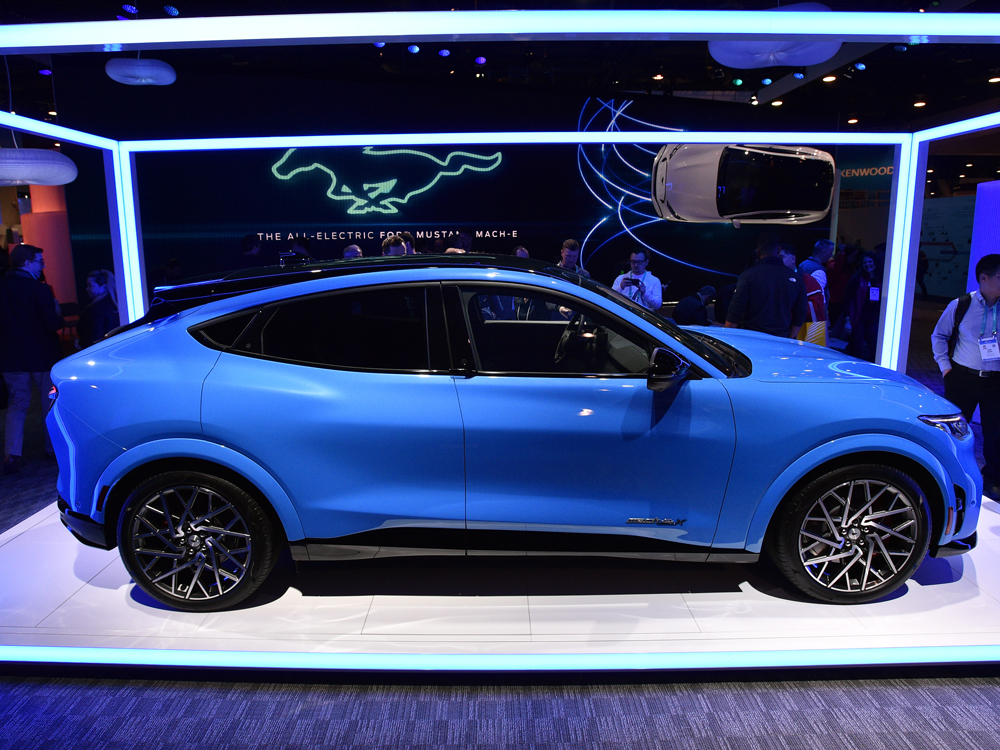I’m sure the Montreal Auto Show will be livelier this weekend, but without any motorheads around, it sure felt a lot like a museum on the morning of Jan. 16, the day before the annual event’s official opening.
The only loud noises came from periodic unveilings of various 2020 models. The crowd was small and consisted of people paid to be there. They gathered around exhibit spaces that were tightly packed with vehicles that fewer and fewer people appear willing to buy, the heirs of artifacts from the debt-fuelled boom in automobile sales that peaked a couple of years ago.
It left me wondering whether the reign of the car in Canada’s economy is over. I don’t know the answer, but since the North American Free Trade Agreement was just rewritten for the sake of the Detroit-based automakers and their unions, it seems a question that should be raised from time to time.
Canadians bought 1.92 million cars and light trucks last year, a three per cent drop from 2018 and a six per cent decline from a record 2.04 million in 2017, according to Rebekah Young, an economist at the Bank of Nova Scotia. This year probably won’t be any better. Bloomberg News this week reported that North America’s Big Three automakers have slowed production, and Aurora, Ont.-based Magna International Inc., one of the world’s biggest auto-parts makers, cut its outlook for 2020.
Young predicts sales of 1.91 million units this year, heralding a third consecutive annual decline, and her forecast aligns with that of Dean Stoneley, head of Ford Motor Co.’s Canadian unit. But if he’s concerned, he isn’t showing it. “We see that as healthy,” he said in an interview. “That’s not any kind of major correction. That’s a healthy industry. For us, the real story behind that (decline) is a change in segmentation.”
By segmentation, Stoneley means Canada’s love of pickup trucks and sport utility vehicles. Total sales are on a downward slope, but demand for automobiles that offer commanding views, extra space and four-wheel drive is on the rise. Looking around the Ford booth in Montreal, you see why that trend suits Stoneley’s employer just fine. Among the two-dozen vehicles on display, there is one sedan off in a corner, and a few Mustangs upfront. But if you want something else with four doors and low to the ground, you might as well keep walking.
“If you look at the industry in 2019 being down over three per cent, the story there is traditional sedans are down over 15 per cent,” Stoneley said. “SUV sales were up, so it’s really a story of segmentation. That’s where we are investing. We see it as a very healthy industry. The commercial industry is very healthy, which is good for us, we are dominant in that space. And SUV sales, truck sales, are very strong.”
Many have remarked on the contradiction between the growing desire to do something about climate change and the buoyant demand for the mode of personal ground transportation that leaves the largest carbon footprint. The International Energy Agency in its 2019 World Energy Outlook said SUVs are responsible for the second-most carbon-dioxide emissions since 2010, behind only the power industry, according to Reuters.
If we’re serious about climate change, we’re going to have to buy different cars, fewer cars, or both.
I went to the auto show because Stoneley was doing interviews to promote the Canadian debut of the new Mustang Mach-E, an all-electric SUV that’s been tagged with Ford’s most famous nameplate. It could be an important innovation, but it’s not going to bend the demand curve for automobiles anytime soon. The base price is $50,500. Ford expects to build only 50,000 this year because the supply of batteries won’t allow for more. A spokeswoman said the company isn’t providing production estimates for future years at this time.
By the by, Ford is building the Mach-E in Cuautitlán, Mexico, so the managed trade provisions in the United States–Mexico–Canada Agreement might not be enough to reverse the southern flow of investment in the North American automobile industry.
Stoneley wouldn’t say if Canada factored in Ford’s electric-vehicle strategy, citing the company’s policy of keeping such plans to itself. But if governments want to get more electric vehicles on the road, he said they will have to keep the incentives coming. The baseline Mach-E is priced just low enough to qualify for the maximum $8,000 rebate that Quebec will give buyers of electric vehicles. “Right now, the technology is still really expensive, so maybe it’s not for everybody, but that will start to change,” he said.
“We do appreciate the incentives,” Stoneley continued. “We see it as an opportunity to get that flywheel turning. At some point in the future, they likely will be less important. For right now, we do see that as important, to just get consumers to take a look at these vehicles. We’re investing in them and clearly we want to see that demand, and government incentives will help with that and help the vehicles appeal to a wider range of people.”
The larger point is that future demand for automobiles could be shaped to a great degree by policy.
Scotiabank’s Young doubts that we’ve hit “peak car.” Older people are keeping their licences longer, and boomers have lots of money, so it’s reasonable to assume sales will eventually rebound. But high levels of household debt will keep that from happening quickly, and the shift of automakers to pricier vehicles will deter potential buyers. That means governments could steer demand to low-emission vehicles, especially if automakers can count on a profit.
“The margins for policy missteps are high though,” Young said.
Financial Post
• Email: kcarmichael@nationalpost.com | Twitter: carmichaelkevin

